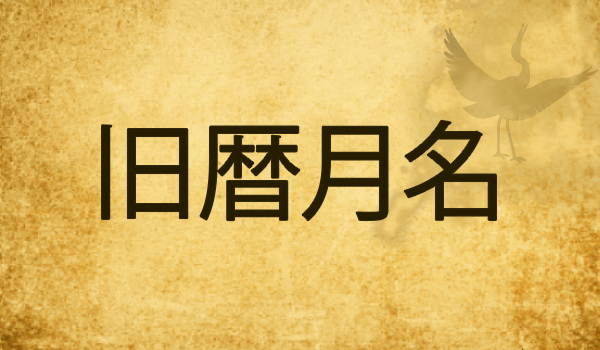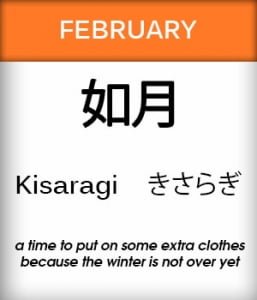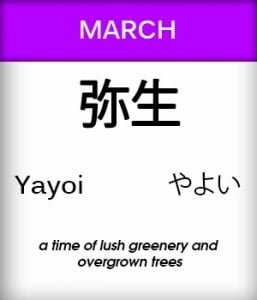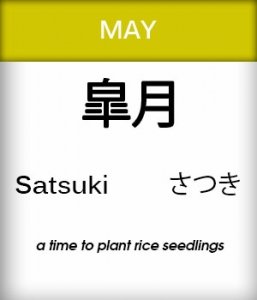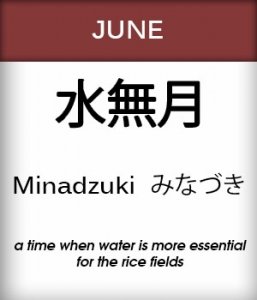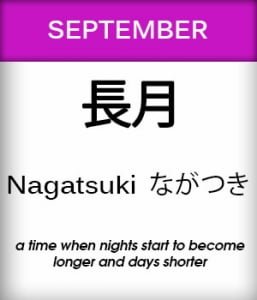The old Japanese calendar is based on lunar cycle and was called the 旧暦 kyūreki or 陰暦 inreki. This calendar dates back to the Edo period, Tempo era. Over the course of time, Western/Gregorian calendar was introduced in Japan and Kyūreki lost its popularity. The western calendar is used till date but a modified version of Kyūreki is still used to look up traditional events. The names of months in Kyūreki are different than those in the western calendar. Interestingly, the names given to each month has a significant meaning associated with the characteristic of that particular month.
What are the month names and their meanings according to the Old Japanese Calendar (旧暦・陰暦)?
Note: There are alternate pronunciations for some moths: 水無月みなつき Minatsuki, 文月ふづき Fudzuki, 葉月はつき Hatsuki, 長月ながづき Nagadzuki.
A song about these old names of Japanese months called ‘kuishinbō no karendā’、was broadcasted several times on the NHK channel’s ‘Minna no Uta’ (a five minutes music program), during the late 1970’s.
kuishinbō no karendā song lyrics
| Japanese | Romaji | Meaning |
|---|---|---|
| むつき 羽根つき 椿もち 梅の花咲く うぐいすもち やよい 草もち 春一番 菱もち あられ ひな祭り ひな祭り うづき お花見 桜もち 端午の節句 かしわもち さなえ みなづき ころもがえ 長雨あけて 水ようかん みずようかん ふづき 七夕 ところてん プール帰りは 宇治金時 おはぎ ながづき 彼岸花 月見団子に 栗かのこ 栗かのこ 桔梗 葛もち かんなづき 木枯しふいて 酒まんじゅう しわす もちつき きな粉もち 餡もち焼いて 大晦日 大晦日 | Mutsuki hanetsuki tsubakimochi umenohanasaku uguisumochi yayoi kusamochi haruichiban hishimochi arare hinamatsuri hinamatsuri Udzuki ohanami sakuramochi tangonosekku kashiwamochi sanae minadzuki koromogae nagaame akete mizuyōkan mizuyōkan Fudzuki tanabata tokoroten pūrukaeriwa ujikintoki ohagi nagadzuki higanbana tsukimidangoni kurikanoko kurikanoko Kikyō kuzumochi kannadzuki kogarashifuite sakemanjū shiwasu mochitsuki kinakomochi anmochiyaite ōmisoka ōmisoka | January is the time for tsubakimochi (和菓子Japanese sweet), it is also when plum flowers are in full bloom; uguisumochi (和菓子) are made in February; spring enters in March, the time for kusamochi (和菓子), this month also brings along the first spring-storm, roasted hishimochi (和菓子) hinamatsuri (doll festival) hinamatsuri. In April we have the flower viewing festival and sakuramochi (和菓子); tangonosekku (5th May, boy’s day) is celebrated with Kashiwamochi (和菓子); June is the time for rice harvesting and seasonal change of clothing, there is continuous rainfall mizuyōkan (Japanese jelly) mizuyōkan. In July tanabata is celebrated with tokoroten (Japanese noodles made from jelly extracted from seaweeds); there is nothing better than a green tea shaved-ice, on the way back from pool (August?); September is when amaryllis flowers grow and people enjoy bean cakes, moon viewing festival dumplings, kurikanoko (chestnut kanoko sweet) kurikanoko. October is the time for bellfowers and kuzumochi (mochi cake); winter’s cold wind and sakemanju (a type of Japanese steamed bun) (November); December’s rice cake and kinakomochi (soy bean flavored rice cake), baked anmochi (sweet red bean flavored rice cake) New Year’s Eve New Year’s Eve. |
I found a vocaloid version of this song on youtube. For more details or to request the ‘kuishinbō no karendā’ song to NHK visit the below link,
http://www2.nhk.or.jp/minna/search/index.cgi?id=MIN197512_02
courtsey:otonokioku https://www.youtube.com/channel/UCvCFgaKljOR0dEh8zIWOg-w
